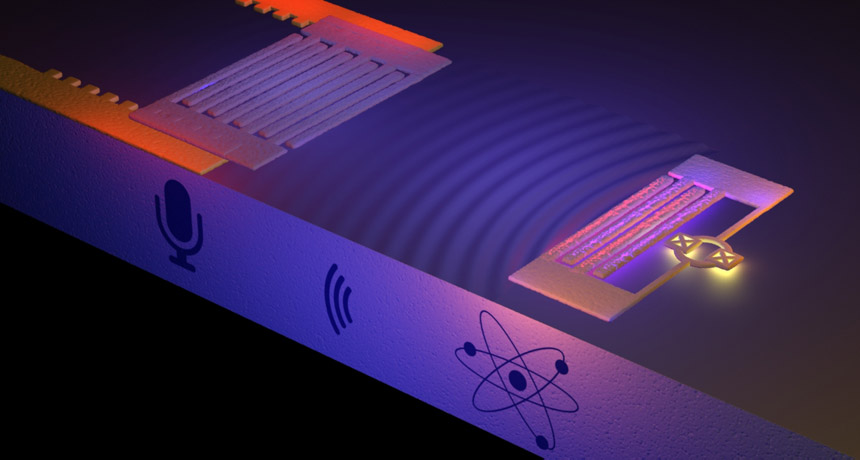Artificial atom probes sound’s quantum side

In this illustration, which is not to scale, an artificial atom (right) generates sound waves as ripples on a solid surface. Interlaced metal fingers acting as a "microphone" (left) pick up the sound, which is composed of quantum particles.
Philip Krantz, Krantz NanoArt







